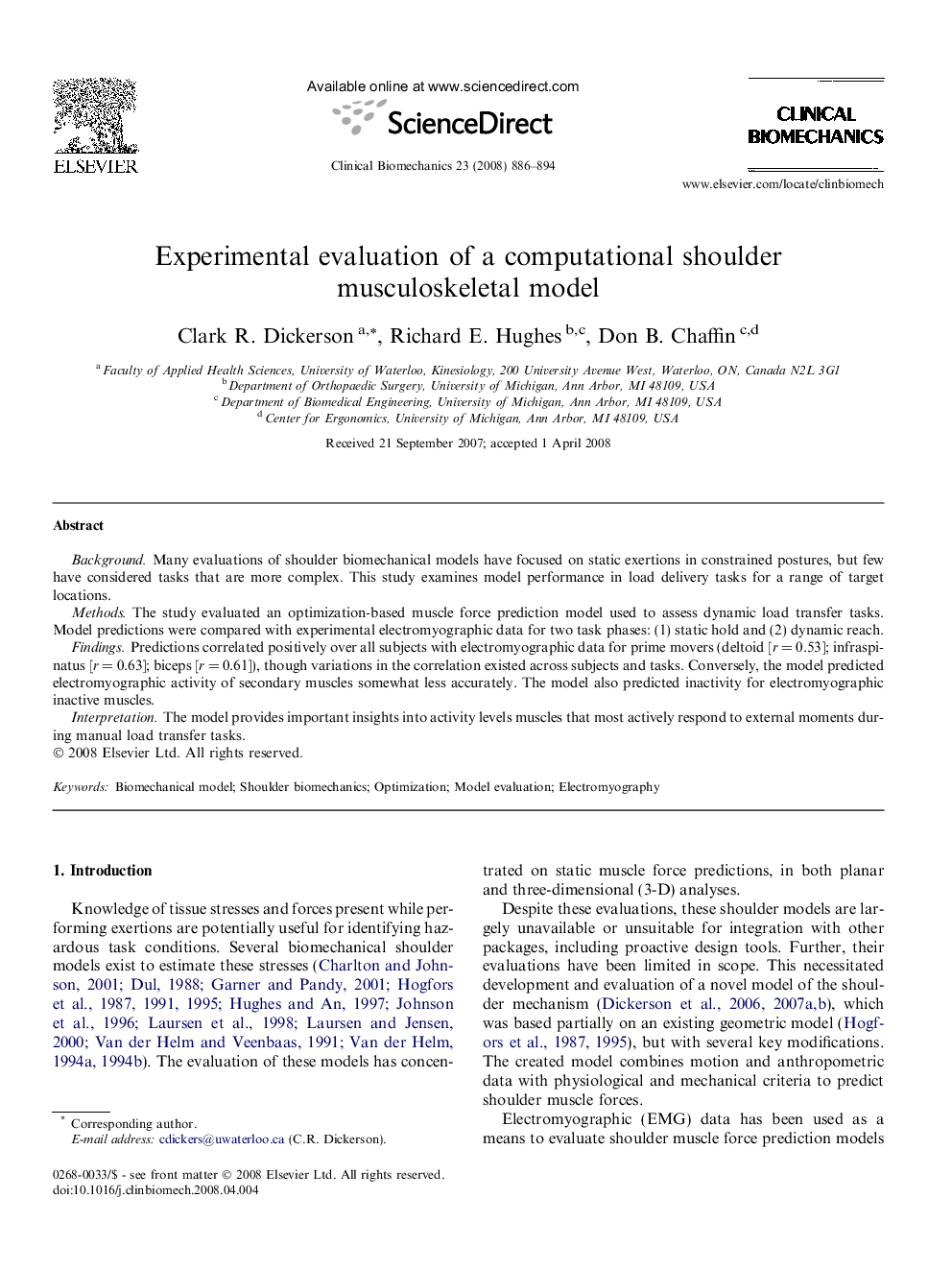| Article ID | Journal | Published Year | Pages | File Type |
|---|---|---|---|---|
| 4051385 | Clinical Biomechanics | 2008 | 9 Pages |
BackgroundMany evaluations of shoulder biomechanical models have focused on static exertions in constrained postures, but few have considered tasks that are more complex. This study examines model performance in load delivery tasks for a range of target locations.MethodsThe study evaluated an optimization-based muscle force prediction model used to assess dynamic load transfer tasks. Model predictions were compared with experimental electromyographic data for two task phases: (1) static hold and (2) dynamic reach.FindingsPredictions correlated positively over all subjects with electromyographic data for prime movers (deltoid [r = 0.53]; infraspinatus [r = 0.63]; biceps [r = 0.61]), though variations in the correlation existed across subjects and tasks. Conversely, the model predicted electromyographic activity of secondary muscles somewhat less accurately. The model also predicted inactivity for electromyographic inactive muscles.InterpretationThe model provides important insights into activity levels muscles that most actively respond to external moments during manual load transfer tasks.
